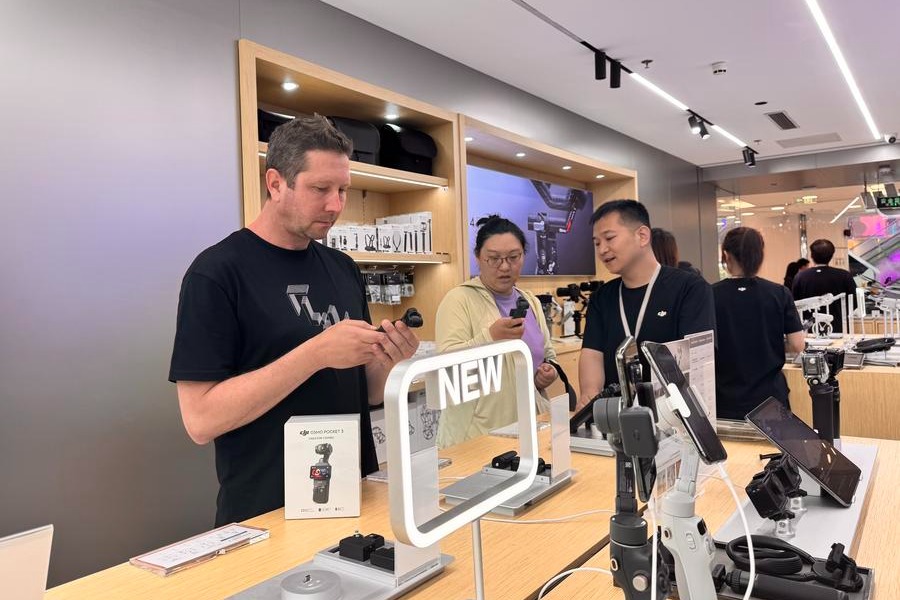Scientists solve lithium battery development problem

Chinese scientists have overcome a key obstacle in the development of all-solid-state lithium batteries by solving the issue of void formation at the interface between the anode and solid electrolyte under low external pressure. The breakthrough enhances the safety and stability of the batteries and moves them closer to commercialization.
"All-solid-state lithium batteries are a promising next-generation energy storage technology due to their use of inorganic solid electrolytes, which improve safety and allow for higher energy density," said Huang Xuejie, corresponding author of the study published on Tuesday in the journal Nature Sustainability.
Huang, a researcher at the Institute of Physics of the Chinese Academy of Sciences, explained that in previous lithium batteries, numerous tiny pores formed at the interface between the anode and electrolyte. These pores accelerated performance degradation and created potential safety risks.
Departing from traditional methods that rely on bulky external equipment to maintain pressure, Huang's team developed "dynamically adaptive interphases", created through the controlled movement of preinstalled iodide ions in solid electrolytes.
During battery operation, the iodide ions migrate toward the anode under the influence of an electric field, forming an iodine-rich layer. This layer attracts lithium ions, which automatically fill the pores, ensuring that the anode and electrolyte stay in close contact even under low external pressure.
Huang said the new design simplifies the manufacturing process and reduces material use without raising production costs.
"By adopting this technology, batteries can achieve a specific energy exceeding 500 watt-hours per kilogram, effectively doubling — or even more — the battery life of electronic devices," he said.
The prototype battery using the new technology showed stable and exceptional performance after hundreds of charge-discharge cycles under standard testing conditions, significantly outperforming comparable batteries, Huang added. He noted that the innovation could help advance technologies such as humanoid robots, electric aircraft and electric vehicles.
Wang Chunsheng, a professor at the University of Maryland in the United States, said the self-adaptive interphase could "transform the development of all-solid-state lithium metal batteries by eliminating the traditional reliance on high external pressure for interfacial stability and stable cycling".
This could boost their sustainability and accelerate their large-scale commercialization, Wang said. "This strategy also enhances the adaptability of solid-state lithium batteries for renewable energy storage, potentially offering efficient and economical solutions to support global sustainable development goals. Moreover, the universal self-adaptive interphase concept could provide a blueprint for the design of next-generation all-solid-state batteries based on other chemistries, such as sodium or potassium."
In a separate study recently published in the journal Advanced Materials, another research team led by scientists from the Institute of Metal Research of the Chinese Academy of Sciences developed a polymeric material that combines both ion transport and storage functions to enhance solid-state lithium battery performance.
This innovation addresses high interfacial impedance and low transport efficiency — two issues that occur in conventional solid-state batteries, where ion transport and storage are handled separately by the solid electrolyte and electrode materials.
limenghan@chinadaily.com.cn





































